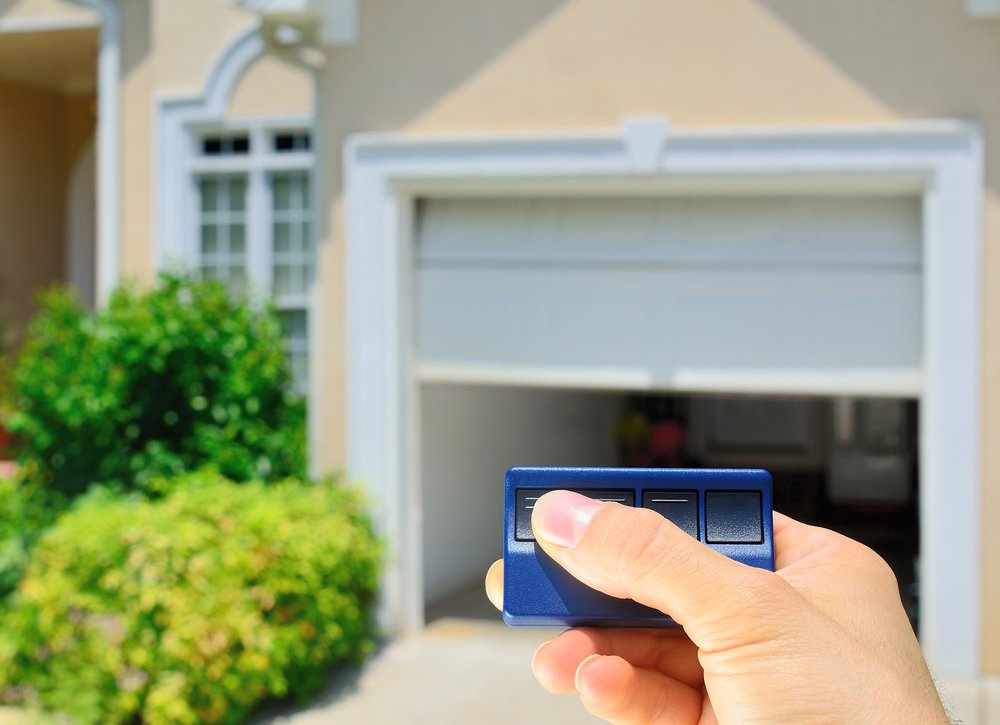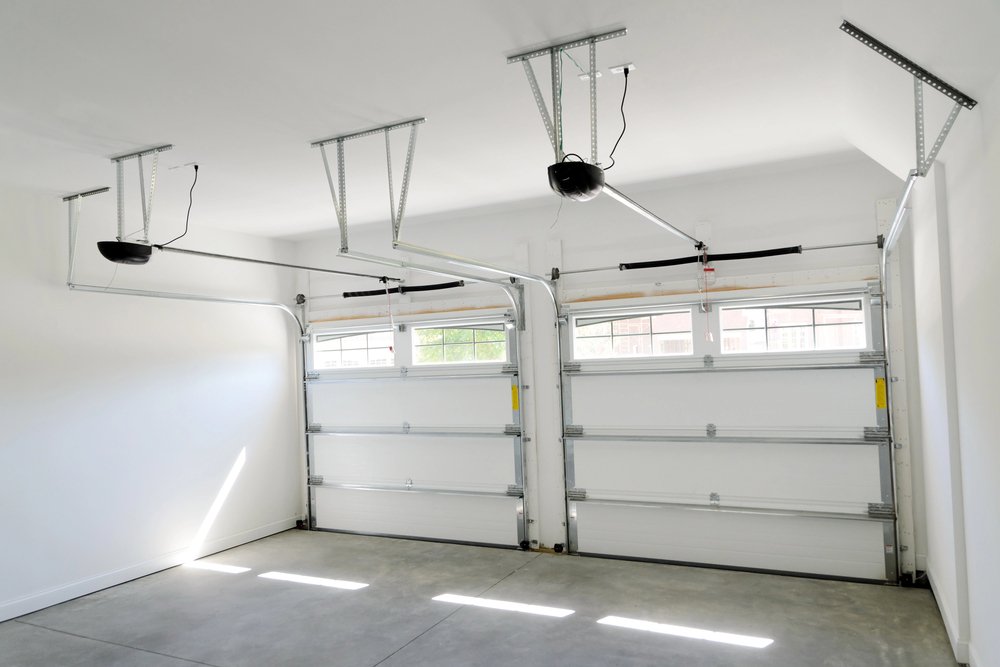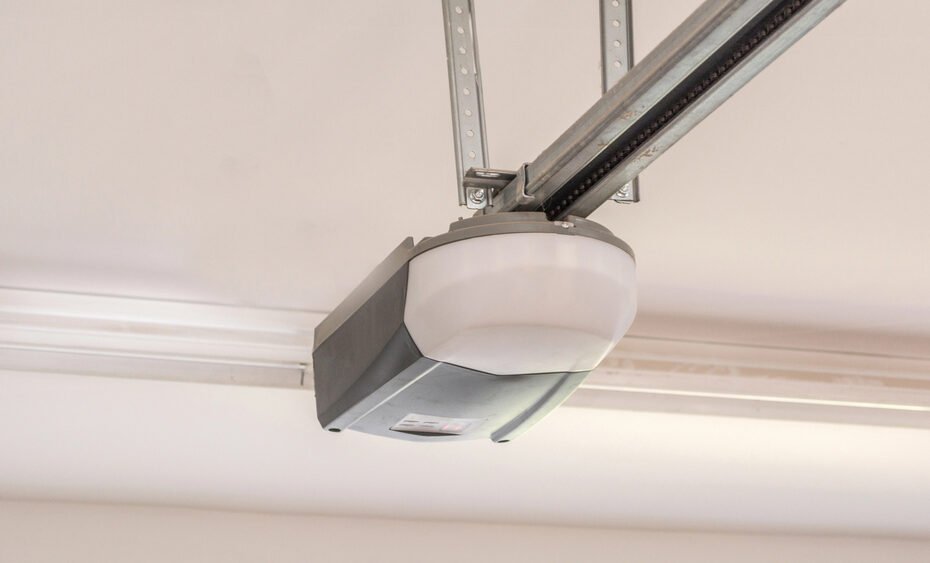Garage door opener installation surprises many homeowners with costs between $218 and $539. Most homeowners pay around $378. The seemingly straightforward project comes with hidden charges that contractors rarely mention upfront.
The installation costs vary substantially due to several factors. Contractors charge $65 to $85 per hour for labor, and the job takes 2 to 6 hours. Smart technology, automatic locks, and battery backups can drive the total installation price to $1,100 for premium models.
This piece breaks down actual costs and exposes hidden fees. You’ll discover money-saving tips that help you choose wisely. The comprehensive breakdown covers opener type selection and helps you avoid costly installation mistakes.
Real Costs vs Advertised Prices
Simple advertised prices for garage door opener installation start at $150-200. These prices create unrealistic expectations for homeowners. The real costs range from $350-500 with proper installation.
Why quoted prices can be misleading
Retailers advertise just the simple unit cost without essential components and services. A standard chain-drive opener with a $150 price tag ends up costing $350-500 after professional installation. A cheap option might need replacement sooner – spending $200 on an opener that lasts two years costs more than a $600 unit lasting a decade.
Hidden fees to watch out for
The simple installation price doesn’t tell the whole story. You should expect these extra costs:
- Electrical work: New wiring installation ($50-130 per hour)
- Old opener removal (might be part of $525 total cost)
- Permit and inspection fees (varies by location)
- Professional labor ($65-85 per hour, takes 2-6 hours)
- Extension kits ($50) for doors taller than 7 feet
Additional equipment costs
Modern features and essential components raise the final price. Battery backup systems cost $50-150. We needed these to protect against power outages. Smart home integration needs more investment, and mobile control subscriptions cost about $300 for ten years.
Safety sensors ($50-100) and automatic locks ($100-300) add to your total investment. Weatherstripping becomes another needed expense, though people often forget about it. Professional installation gives you emergency service availability and warranty support – value that goes beyond the original price tag.
You might pay $225-300 if existing parts can be saved. Older garages often need extra mounting hardware ($50-150) and electrical work ($100-200). Learning about these potential expenses helps you avoid budget surprises and plan your garage door opener installation costs better.

Breaking Down Installation Costs
Professional installers charge between $65 and $85 per hour across regions. A complete setup takes 2 to 6 hours of work.
Labor charges explained
The complexity of the job drives professional installation costs. Simple installations with good conditions take about 3.6 hours of labor and cost $185 to $392. Installers in urban areas charge more because of higher living costs and customer demand.
Your final price changes based on the installation’s complexity. Replacing an existing door costs less than a new installation because you can use the components already there. You might need an electrician if your garage doesn’t have proper electrical wiring. Their services cost $40 to $120 per hour.
Parts and materials breakdown
Here’s a complete breakdown of materials and equipment:
| Component | Cost Range |
|---|---|
| Basic Hardware & Supplies | $32 |
| Specialty Equipment | $42 |
| Safety Sensors | $25 – $100 |
| Extension Kit (if needed) | $50 – $100 |
| Electrical Wiring | $10 – $25 per linear foot |
The installation needs specific equipment like pneumatic framing nailers, miter saws, and electric planers. Material and supply costs cover simple replacement fasteners, hardware, sealants, adhesives, and lubricants.
Several factors affect the final labor costs. A single-door installation costs $150 to $500, while double-wide door installations range from $300 to $700. The installer’s expertise and your garage’s requirements determine the final price.
You might see extra charges to update older systems or handle complex installations. Installers must assemble the carriage tube, mount it to the power unit, and connect safety devices properly. Most professionals offer a one-year labor warranty with their service.
Choosing the Right Opener Type
Your garage door opener choice will affect both your upfront costs and how happy you’ll be with it in the long run. The market offers three main types, each with its own benefits for different needs.
Chain drive ($150-250)
Chain drive openers are the most popular choice among homeowners. These systems work with a metal chain mechanism like a bicycle chain and deliver reliable performance at an affordable price point. The cost ranges from $150 to $250, making them the most budget-friendly option.
These openers are strong and dependable, perfect for heavy garage doors. You’ll only need to adjust the metal-on-metal operation once or twice during its lifetime. Key advantages include:
- Long lifespan when maintained well
- Great lifting power for heavier doors
- Affordable replacement parts
Belt drive ($200-350)
Belt drive openers are a modern option that use steel-reinforced rubber, fiberglass, or polyurethane belts. You can expect to pay between $200 to $350 for these premium systems that many homeowners love.
The smart design uses smaller DC-powered motors that work smoothly and quickly. These openers move doors at 7-8 inches per second – a bit faster than other types. They work best in homes where noise matters, such as garages next to living spaces or bedrooms.
Direct drive ($300-500)
Direct drive openers showcase the latest garage door technology, with prices from $300 to $500. These systems are unique because their motor moves along a stationary chain. You’ll get almost silent operation and rarely need maintenance.
This comparison table shows the key differences:
| Feature | Chain Drive | Belt Drive | Direct Drive |
|---|---|---|---|
| Price Range | $150-250 | $200-350 | $300-500 |
| Noise Level | Highest | Low | Lowest |
| Maintenance | Regular | Moderate | Minimal |
| Durability | Excellent | Good | Very Good |
| Speed | Standard | Fast | Moderate |
Your specific needs will guide your choice. Chain drives give you the best value for detached garages where noise doesn’t matter. Belt drives hit the sweet spot between quiet operation and reasonable cost. Direct drives work best when you want the quietest operation and minimal upkeep.

Extra Features That Add Up
Modern garage door openers come with many advanced features that affect their final installation costs. Let’s get into these add-ons and how they affect your budget.
Smart home integration costs
Smart connectivity turns simple openers into sophisticated home automation devices. A WiFi-enabled opener with mobile control capabilities adds approximately $300 for a ten-year subscription service. These systems let you access your garage remotely through smartphone apps and combine smoothly with popular voice assistants like Alexa and Google Assistant.
The following smart features affect the total cost:
- Remote monitoring and control capabilities
- Up-to-the-minute notifications for door activities
- Integration with existing home automation systems
- Delivery partner access for secure package delivery
Security add-ons
Security is a vital factor when choosing additional features. Physical locks operate without electricity and resist hacking. They stand as one of the most reliable security measures. These locks work with smart features to create a complete security system:
| Security Feature | Cost Range |
|---|---|
| [Automatic Lock System | $100-300 |
| New Safety Sensors (pair) | $25-50 |
| Built-in Cameras | Included in premium models |
| Motion Detectors | Additional component cost |
These security components boost protection and give you activity logs and monitoring capabilities.
Battery backup systems
Battery backup systems prove vital, especially when you have frequent power outages. These systems cost between $50 and $150 and provide significant benefits during emergencies.
Key points about battery backup systems:
- Duration: A fully charged system provides 1-2 days of normal operation during power outages
- Maintenance: Batteries typically last 1-2 years with proper care
- Installation: Most modern openers include enclosed battery compartments for easy replacement
Battery backup has grown so important that some regions now require all new garage door openers to include this capability. This requirement helps homeowners access their garages during emergencies or evacuations, making it worth the extra cost.
Advanced features work best together. To name just one example, smart home integration paired with security add-ons creates automated routines, such as activating your security system when the garage door closes. Understanding how these features work together helps you decide which add-ons justify their cost for your needs.
Common Installation Mistakes
Avoiding mistakes during garage door opener installation is vital because they can get pricey. Small errors create safety hazards and lead to expensive repairs later.
Wrong horsepower selection
Your garage door opener’s incorrect horsepower selection creates problems that last. A 1/3 horsepower opener is the cheapest option but won’t work for heavy doors. The opener’s horsepower should match your door’s specifications:
| Door Type | Recommended HP | Price Range |
|---|---|---|
| Standard Single | 1/2 HP | $150-250 |
| Heavy/Insulated | 3/4 HP | $200-350 |
| Solid Wood | 3/4+ HP | $300-500 |
Motors strain when openers lack power, which causes early wear. A 1/2 horsepower unit running a heavy wooden door won’t last long. The cheaper initial cost leads to more expenses through constant replacements and repairs.
Improper mounting
Safe operation depends on secure mounting. Installing the opener on weak surfaces causes these problems:
- Too much vibration during operation
- Loose mounting creates safety risks
- Opener parts wear out early
You need proper brackets and support systems for installation. Many DIY installers use the flimsy straps that come with some openers. Professional installers recommend solid angle iron for mounting that ensures stability and reduces vibrations.
Wiring errors
Bad electrical work creates safety risks and operational issues. You should know common wiring mistakes before starting installation. Photo eye sensors often fail because of wrong wire connections.
Key wiring points to remember:
- Use the right wire gage (22-gage, two-strand low-voltage wires)
- Keep wires away from power lines to stop interference
- Fix loose connections that cause operational problems
Without doubt, good wire routing matters. Regular operation vibrations can disconnect poorly secured wires. Many installers don’t realize how important proper circuit selection is. Fire risks increase and breakers trip repeatedly when the opener connects to an overloaded circuit.
Professional installers test all electrical components for safety. Skipping these vital tests leads to serious accidents. Wrong photo eye alignment or safety feature wiring creates dangerous situations. The safe operation of your opener depends on correct wiring connections and complete testing.
Ways to Save Money
You can save a lot on your garage door opener installation with smart timing and planning. The right purchase timing makes a big difference in what you’ll pay.
Best time to buy
Smart purchase timing will help you save money. Research shows you’ll find the best prices during fall and winter months. Manufacturers give their dealers special incentives during these seasons, which means better prices for you.
Buying during off-season gives you:
- More scheduling options
- Shorter installation wait times
- Better deals because demand is low
Early spring brings great savings opportunities too, as companies want to start their year with attractive deals. Many homeowners get their tax returns during this time, making it perfect to plan this investment.
Negotiation tips
Getting multiple quotes will help you land the best deal. Studies show price comparisons between installers reveal big cost differences. Here are some proven money-saving strategies:
| Negotiation Strategy | Potential Savings |
|---|---|
| Multiple Quotes | 15-30% off quoted price |
| Off-Season Timing | 10-25% reduction |
| Bundle Services | Additional 5-15% savings |
Installation companies roll out special promotions and discounts regularly. You can save more by looking at slightly older models or doors with minor flaws, without giving up on quality.
Maintenance to reduce costs
Regular maintenance will save you money in the long run. Studies show homeowners who skip routine maintenance pay $150 to $350 more per repair incident – that’s over 65% higher costs.
Key maintenance facts:
- Professional tune-ups cost $100-150 yearly
- Well-kept doors last 15-30 years
- Regular upkeep prevents 82% of common problems
Professional tune-ups are cheaper than emergency fixes. These check-ups include lubrication, safety tests, and small adjustments. Homeowners save $150-350 yearly on potential repair costs.
Here’s how to manage costs better:
- Get yearly professional inspections
- Fix small issues right away
- Keep moving parts lubricated
- Clean tracks and sensors often
Good maintenance does more than save money directly. Your garage door’s condition affects your property value – 82% of buyers look at the garage when making purchase decisions.
Energy costs drop with proper maintenance too. Well-maintained doors seal better and insulate properly, which cuts heating and cooling expenses year-round. This matters even more if your garage connects to living areas, as it affects your home’s overall energy bills.
Quality materials might cost more upfront but save money over time. Better components mean fewer replacements and repairs, which adds up to big savings down the road.
Conclusion
The right understanding of garage door opener installation costs will prevent budget surprises and give a smart investment return. Basic advertised prices begin at $150-200. The actual costs typically range between $350-500 with proper installation.
Apart from the cost of new garage doors themselves, most people forget to consider the cost to have the door openers installed. While not an extremely high cost, it does need to be budgeted for.
Smart planning and good timing can substantially reduce these expenses. Homeowners find excellent discount opportunities during fall and winter months. You can save 15-30% through smart negotiation and comparison shopping. On top of that, it is significant to maintain your system regularly – saving homeowners $150-350 annually in potential repair costs.
The long-term value matters more than upfront costs. Quality openers, proper installation, and safety features create a reliable system that lasts years. Smart integration and battery backup systems add to original expenses but provide valuable convenience and security benefits.
The right opener type and power rating for your specific door matter more than finding the lowest price. A properly matched system reduces wear, prevents getting pricey repairs, and ensures safe operation throughout its lifespan.
